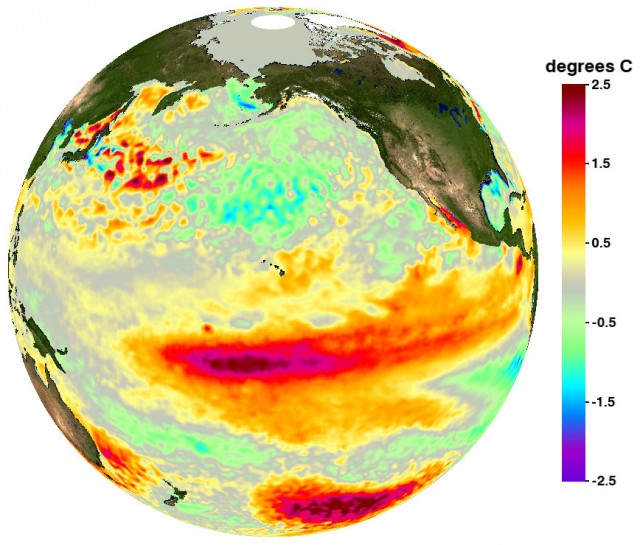
If the length of a day changed by fractions of a millisecond, it probably wouldn’t make you late for work—that’s still on you. But the speed of Earth’s rotation does very subtly change over time, influenced by a number of factors. Some of these are geological, as you might expect. But the Earth's rotation is also influenced by something we don't think of as being that substantial: the weather.
We’ve all seen an Olympic figure skater begin spinning, tuck his or her arms in, and accelerate to a nauseating velocity. This is conservation of momentum. The farther the skater's mass is spread from the axis of rotation, the greater the moment of inertia, and the more angular momentum they need to spin at a given rate. Pulling in your arms reduces the moment of inertia but not the angular momentum—the result is an increased rate of rotation.
The same thing can happen (with far less dramatic results, thankfully) when the mass of the Earth is redistributed, as happens when the crust moves during a particularly large earthquake. On longer time scales, the motion of tectonic plates, circulation in the mantle, or circulation in the outer core can also affect Earth’s moment of inertia.
Above the surface, there are fluids that can move independently of the Earth, like the atmosphere. That motion can actually apply a torque that acts to speed up or slow down the Earth’s rotation. The El Niño Southern Oscillation is a major source of year-to-year variability in Earth’s average surface temperature and, it turns out, its rotational velocity. During La Niña conditions, the winds conspire to push warm surface water in the Eastern Pacific westward, bringing cooler water up to the surface. Conversely, during an El Niño, the warm surface water extends to the eastern side of the Pacific, keeping a lid on the cool water beneath. This difference has a large effect on atmospheric circulation patterns.
It has been known for a while that this manages to slightly alter the Earth’s rotation, but University of La Rochelle researcher Olivier de Viron and Jean Dickey of NASA’s Jet Propulsion Laboratory set out to study how two slightly different flavors of El Niño compare. In the canonical El Niño, the warmest surface water (relative to the local average) is found in the Eastern Pacific. In what’s sometimes referred to as an El Niño “Modoki,” however, that peak anomaly is located in the Central Pacific. That means that the atmospheric circulation patterns are a little different, as are the regional weather impacts.
The researchers worked with a global “reanalysis”—a sort of atmospheric model that produces global conditions consistent with all the available data—going back to 1948 to compare the effects of Eastern Pacific and Central Pacific El Niños. They found that broad areas of higher and lower atmospheric pressure set up in different locations. And that meant that the Eastern Pacific El Niños would have a larger impact on Earth’s rotation, lengthening the day by a little over 0.1 milliseconds, as compared to about 0.05 milliseconds for the Central Pacific El Niños.
Here’s how the researchers think this works: In an Eastern Pacific El Niño, low atmospheric pressures tend to set up on the western sides of the Andes, Rockies, and Himalayas, with higher pressures on the other side of the mountains. That actually means the atmosphere is pushing westward, against those mountains. And the force of that push provides a torque opposing the Earth’s rotation. Stronger winds over the northern part of the Pacific, meanwhile, apply a frictional force in the opposite direction that negates the mountain torque over time.
http://arstechnica.com/science/2014/05/how-el-nino-temporarily-slowa-the-earths-rotation/
No comments:
Post a Comment